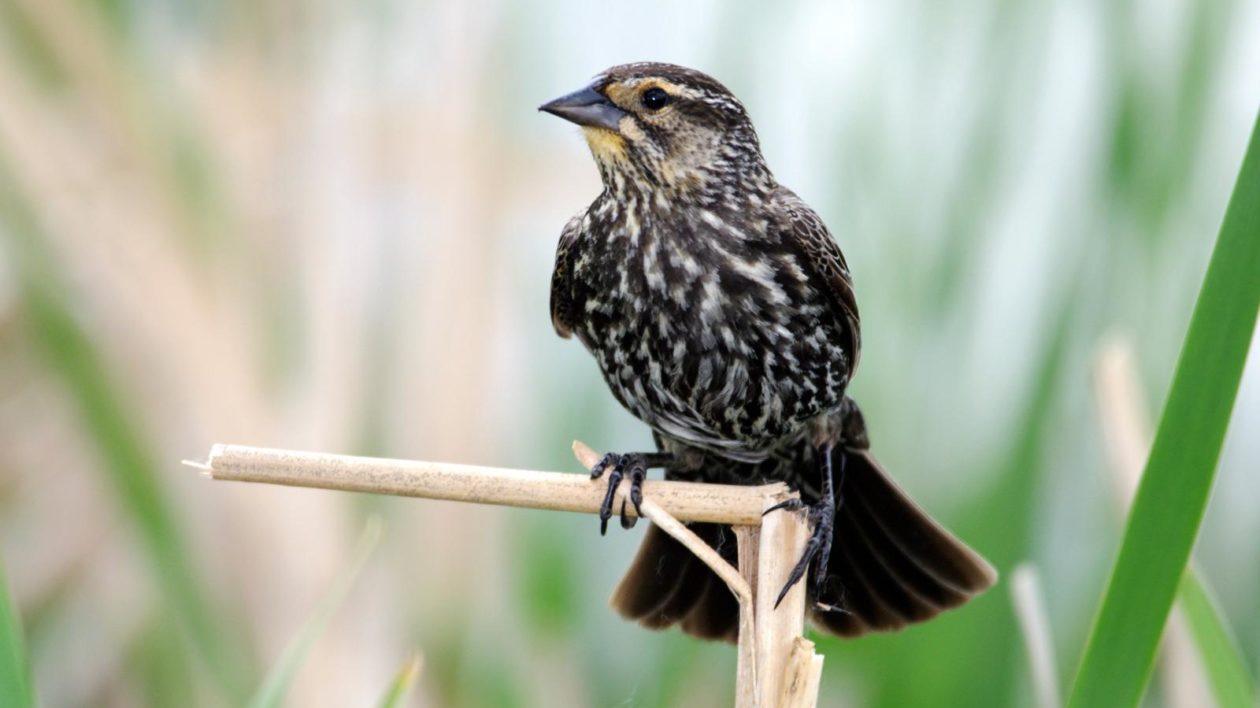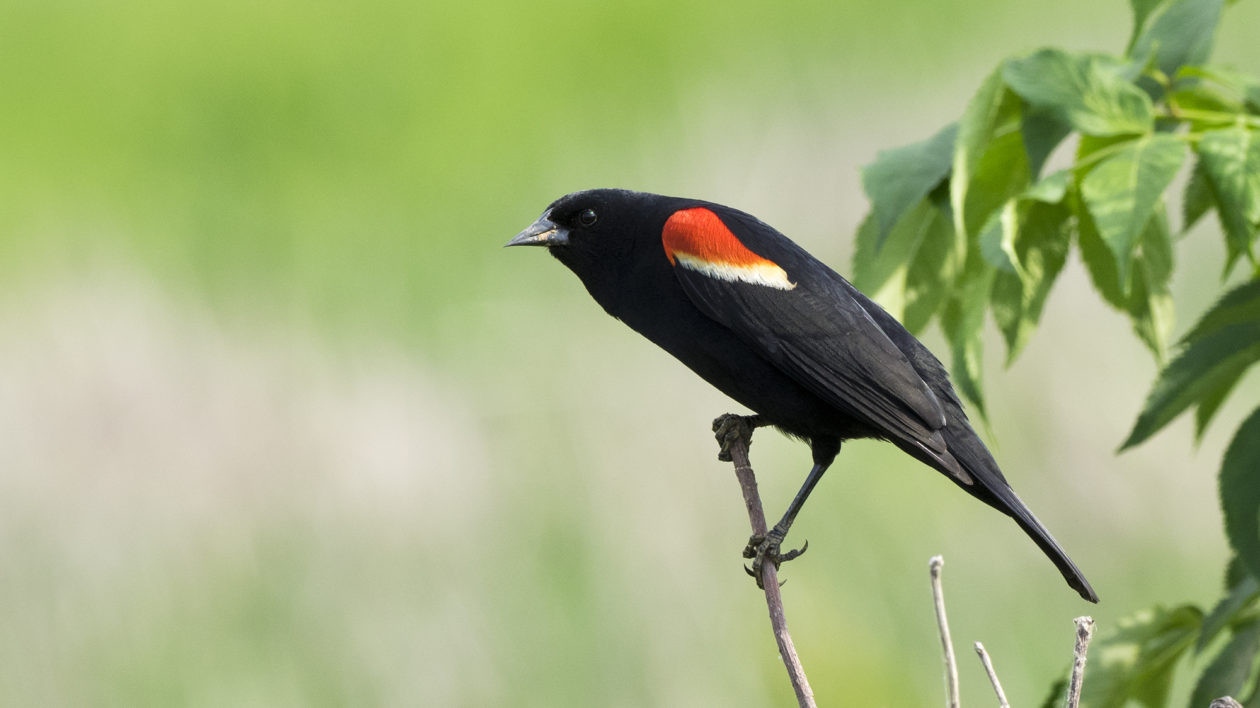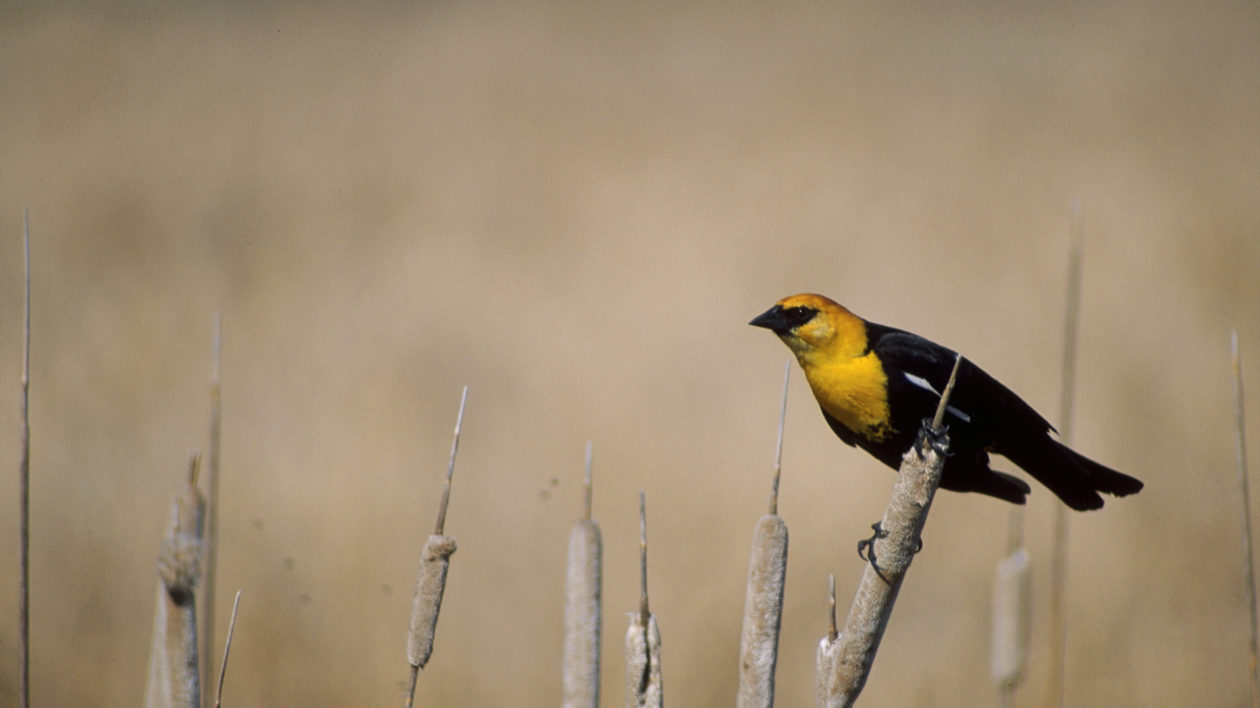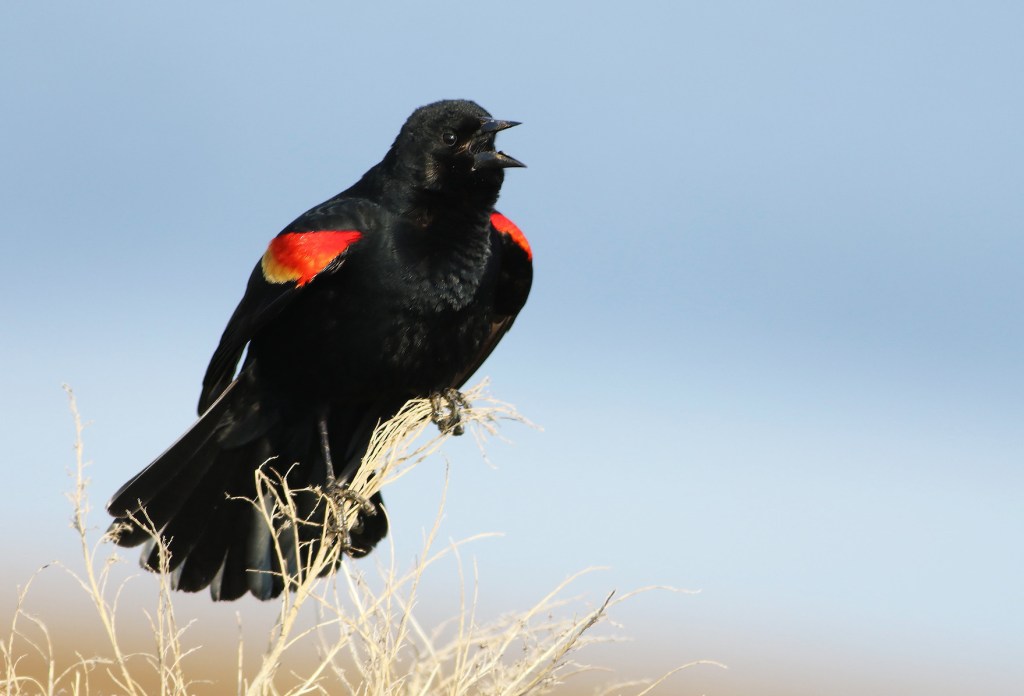Walk along a river path or sit by a pond nearly anywhere in North America, and there’s a good chance you’ll hear the spring chorus of red-winged blackbirds. This blackbird is one of the most widespread and easily recognizable birds on the continent. It’s also one of the most fun to observe.
The bright-red epaulets on the male’s wings are unmistakable. For many of us, their vocalizations are one of the sure signs that spring is here.
You might spot some red-winged blackbirds on a nature hike or bird outing, but chances are you’ve seen this species so many times you barely notice. Have you ever stopped and really observed them? It’s one of nature’s best shows. And if you can get outside for a walk, chances are there’s a display near you.

Defend the Territory
Red-winged blackbirds are often found in thick vegetation like cattails along wetlands or on field edges. You will often see a large number of them seemingly together. But look closer. Red-winged blackbirds have a particularly fascinating territorial behavior.
Males set up territories where they call ceaselessly and display their red wings. As the Cornell Lab of Ornithology notes, as males mature, their black feathers get glossier and the red wings get brighter.
The birds also do a flight display over their territory, flying at slow speed for a more dramatic display. According to the Lab’s publication All About Birds, “Older males secure the highest quality territories and the fittest mates. In experiments, males with blackened epaulets often lose their territories.”
A male with brighter wings attracts more mates. One male’s territory can include five or more female red-winged blackbirds. These females are more drab. They flit around the undergrowth and are often harder to see. Look closely and you can often watch their activity.

Sometimes less-dominant males sneak into a territory and breed with females. This is actually quite common among other species of animals as well.
A male red-winged blackbird fiercely defends its territory. You might say it’s an expert at social distancing. To a point. Red-winged blackbirds know when to keep its neighbors away, and when it makes sense to socialize.
A single male red-winged blackbird, for instance, would be somewhat vulnerable to nest predators. A whole flock can alert others to danger. So red-winged blackbirds have partitioned territories, but at a casual glance, it looks like they are packed into the habitat. Still, if a male ventures outside his zone, he is going to be chased.
The territoriality disappears all together at feeding time. The flock feeds en masse in open fields. Again, a flock offers better protection against predators. But the red wings are signals of conflict, so how do the birds put aside their differences? To avoid unpleasant fights at dinner, male blackbirds tuck in their wings and don’t display at these times.

Predator Patrol
Back at its display ground, a red-winged blackbird will fend off rivals of its own species at its territory, but like many birds, will also drive away just about anything that gets near. Last summer, a photo of a red-winged blackbird “riding” a bald eagle made global news. The blackbird was most likely chasing the eagle from its territory, a fairly typical behavior.
Red-winged blackbirds are one of many small birds that will mob hawks and owls. This behavior is not quite as risky as it looks: a key for a successful hunt is the element of surprise. Take that away, and the little birds can maneuver around a larger hawk, harassing it until it moves away from vulnerable nestlings.
Red-winged blackbirds will also dive bomb foxes, cats, dogs and, yes, humans. But red-winged blackbirds adapt their defensive strategies to the situation.
I frequently run along a greenbelt trail near my home in Boise, going by several blackbird display areas. I’ve never been attacked. The birds see joggers, walkers and bikers all day long. If they fended off every human, that’s all they would do all day (and they’d probably lose their territories to less aggressive blackbirds).
However, I once did a 9-mile summer run along a very rural Iowa road. Judging by the quizzical looks from folks in passing cars, jogging was a far less common pastime there. And red-winged blackbirds dive bombed me along much of my route, and with relentless fury. I was large and threatening, and as such needed to be driven out.

Enter the Yellow-Headed Blackbird
In the western part of red-winged blackbird range, another blackbird species adds additional drama. The yellow-headed blackbird shares much the same habitat as red-winged blackbirds, and has a similar territorial behavior.
According to the Cornell Lab, a male yellow-headed blackbird will defend a territory that includes as many as 8 nests. The male guards all nests in his territory, but interestingly only helps feed the nestlings in the first established nest.
The yellow-headed blackbird’s territoriality extends to red-winged blackbirds. Where the two species share habitat, the yellow-headed is dominant and claims all the prime nesting spots. According to Cornell, the yellow-headed also drives off marsh wrens, perhaps because these birds will eat eggs. When yellow-headed blackbirds move out of their nesting area, marsh wrens will move back into the neighborhood.
I find the yellow-headed blackbird to be one of the most beautiful marsh birds. They’re particularly common at one of my favorite places, Silver Creek Preserve in southcentral Idaho. And while I can’t visit there right now, I can hear their calls in my head, and see their yellow heads bobbing in and out of the cattails. As is the case for many of us, some of my solace in nature at the moment exists in my memories.
But there are also great birds likely right outside your window. If you can get outside, sit and listen. The dramas of red-winged blackbirds are playing out right now, at a marsh or field near you.




I brush hog our field annually and always notice RedWingers defying gravity perched stop hay strands.
How is this possible?
The Internet doesn’t know, but such as “what makes a cat purr”, no one will admit they don’t know.
I’ve been curious for years, and have never found an answer.
Can you shed any light on my question?
Thanks,
Mark
Why can’t a few of them be brought here to Ireland? Would they not survive in this climate?
Hi Terrence,
Thanks for your question. Introducing birds outside their native range is almost never a good idea. Consider that a few starlings were introduced to New York from Europe, and they quickly became an invasive species and spread across the continent. Introduced red-winged blackbirds could have many unintended and ecologically devastating consequences.
Best,
Matt
Awesome article, wow, some things I learned about this bird I didn’t know. I enjoyed the read. Thank you for your expertise and insight
Saw one at Midmar Dam KZN South Africa just yesterday
Thank you for an interesting article. I just finished a walk with my dog along a path near a pond with cattails and lots of red winged blackbirds. I love their songs.